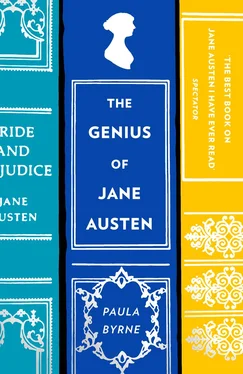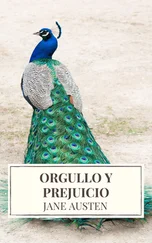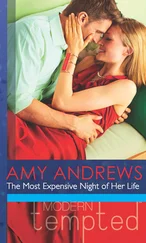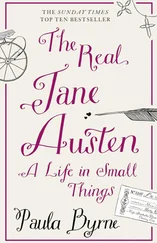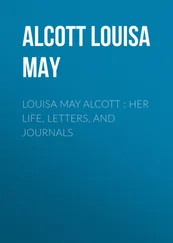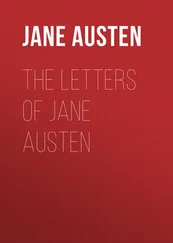We were all at the Play last night, to see Miss O’neal [ sic ] in Isabella. I do not think that she was quite equal to my expectation. I fancy I want something more than can be. Acting seldom satisfies me. I took two Pocket handkerchiefs, but had very little occasion for either. She is an elegant creature however & hugs Mr Younge [ sic ] delightfully. ( Letters , p. 283)
She shows discernment in her rather cool response to O’Neill’s performance. Even O’Neill’s most ardent admirers admitted that she was less good in maternal parts, like Isabella , but was more suited to playing innocent young girls, such as the lovesick Juliet, and repentant fallen women, such as Jane Shore and Mrs Haller: ‘She could not represent maternal affection; her love was all the love of fire, youth and passion.’ 61
Isabella , the tragedy of a devoted wife and mother who is persuaded to marry again only to find her beloved husband is alive, was considered to be one of Siddons’s finest roles. She had established herself on the London stage with her performance in the part. O’Neill suffered from the inevitable comparisons drawn between the two women. Even Hazlitt, who admired O’Neill’s Isabella, thought it lacked Siddons’s grandeur and power: ‘Nothing can be more natural or more affecting than her noble conception of the part. But there is not that terrible reaction of mental power on the scene, which forms the perfection of tragedy, whether in acting or writing.’ 62Oxberry’s biography described her performance in Isabella as ‘artificial’ and suggested that it ‘savoured strongly of adoption from the style of Kean’. 63
Austen was clearly intimate enough with the theatre world to know about the nuances of O’Neill’s acting style. Her joking reference to her two pocket handkerchiefs alludes to O’Neill’s reputation as an actress of excessive sensibility whose magic was to ‘raise the sigh’ and who provoked tears rather than terror. O’Neill’s biographer observed that her ‘triumph, it has been justly said, is in tears’. 64For Hazlitt, O’Neill’s power lay in her extraordinary ability to draw sympathy from the audience. It was her ‘reaction’ to Romeo’s death that characterised her unique acting style: ‘In the silent expression of feeling, we have seldom witnessed anything finer.’ 65
The telling phrase ‘[she] hugs Mr Young delightfully’ suggests that there was a kind of intimate theatrical code between Austen and her niece. As they were both aware, coupled with O’Neill’s ability to elicit sympathy and tears was her reputation as a ‘hugging actress’. This appellation appears to have been given by Thomas Amyot, according to the testimony of Crabb Robinson’s diary: ‘Saw Miss O’Neill in Isabella. She was as Aymot well said, “a hugging actress”. Sensibility shown in grief and fondness was her forte, – her only talent.’ 66
The deleterious effects of excessive sensibility are a recurrent theme of Austen’s fiction from her earliest jokes in Love and Freindship to Sanditon . Her joke about O’Neill’s sensibility is shared not only with Anna but also with her other favoured niece Fanny Knight:
I just saw Mr Hayter at the Play, & think his face would please me on acquaintance. I was sorry he did not dine here. – It seemed rather odd to me to be in the Theatre, with nobody to watch for. I was quite composed myself, at leisure for all the agitation Isabella could raise. ( Letters , p. 285)
Austen’s ironic remark, ‘It seemed rather odd to me to be in the Theatre, with nobody to watch for’, comically portrays herself in the role of the chaperone of her young nieces, guarding their exposure to excessive sensibility or ‘agitation’. Earlier, we saw her worrying about Fanny’s agitation on seeing Kean. As indicated, both Kean and O’Neill were reputed to have the power of making their audience faint under their spell. Towards the close of this letter, Austen makes a striking reference to the two most famous tragediennes of the age, and uses the ardent acting style of O’Neill to express the contrasting natures of her young nieces:
That puss Cassy, did not shew more pleasure in seeing me than her Sisters, but I expected no better; – she does not shine in the tender feelings. She will never be a Miss O’neal; – more in the Mrs Siddons line. ( Letters , p. 287)
This passage, perhaps more than any other single reference to the theatre, is revelatory of Jane Austen’s intimacy with the late Georgian theatre. As she was clearly aware, one of the current debates in the theatre world was the contrasting acting styles of Mrs Siddons and Miss O’Neill. The latter’s ‘extreme natural sensibility’ was played off against the former’s classical nobility. For Hazlitt, Siddons was the embodiment of ‘high tragedy’, O’Neill of ‘instinctive sympathy’. 67
O’Neill’s biographer, Charles Inigo Jones, complained of ‘the rather too invidious comparisons constantly kept up betwixt her and Mrs Siddons’, and yet proceeded to make his own comparisons, contrasting not only the acting styles of the two women but their physical attributes which, he believed, embodied their acting styles. Thus Siddons’s ‘grandeur and dignity are pictured in her appearance’, and O’Neill’s ‘excess of sensibility is predominant … and well pourtrayed in her countenance’. 68
One of the best comparisons of the two tragedians is made in Oxberry’s memoir of O’Neill:
Miss O’Neill was a lovely ardent creature, with whose griefs we sympathized, and whose sorrows raised our pity. Mrs Siddons was a wonderful being, for whom we felt awe, veneration, and a more holy love … Miss O’Neill twined most upon our affections, but Mrs Siddons made an impression on our minds, that time never eradicated. 69
Austen’s observations in the scanty correspondence that survives offer decisive, hitherto neglected, evidence of her deep familiarity with the theatre of Siddons and O’Neill. In addition, her manner of comparing social conduct to theatrical models such as her niece’s Siddons-like dignified behaviour denoting a lack of sensibility (‘the tender feelings’) betrays a striking propensity to view life through the spectacles of theatre.
In January 1801, Cassandra Austen was compelled to abandon a trip to London, where she had intended to visit the Opera House to see the celebrated comic actress Dora Jordan (1761–1816). Jane wrote to her: ‘You speak with such noble resignation of Mrs Jordan & the Opera House that it would be an insult to suppose consolation required’ ( Letters , p. 71).
The King’s Theatre or Italian Opera House in the Haymarket had been built by Vanbrugh in 1705. The Opera House was destroyed by fire in 1789 and was rebuilt on a vast scale in 1791. 70On the opening night, Michael Kelly sang in The Haunted Tower and Dora Jordan performed in Kemble’s farce, The Pannel . 71In 1799 the interior of the Opera House was partly remodelled by Marinari, the principal scene painter at Drury Lane. 72Austen’s sympathy for Cassandra’s double disappointment was therefore equally distributed between seeing the new Opera House and seeing the great Mrs Jordan.
In 1801 Dora Jordan was at the height of her powers, and the star of Drury Lane. As Siddons was the Tragic Muse of the London stage, so Jordan was the Comic Muse. 73Hoppner’s portrait of Jordan as ‘The Comic Muse’ was a huge success at the Royal Academy in May 1786. 74Not even Jordan’s long-term liaison with the Duke of Clarence (to whom she bore ten children over a period of twenty years) could stem the tide of ‘Jordan-Mania’ that swept the country in the late eighteenth and early nineteenth centuries. Her image was everywhere: in the theatre, in theatrical engravings in print shop windows, and in the numerous caricatures by Gillray and Cruikshank. Sheet music of the songs that she sang at Drury Lane were sold on the streets.
Читать дальше
